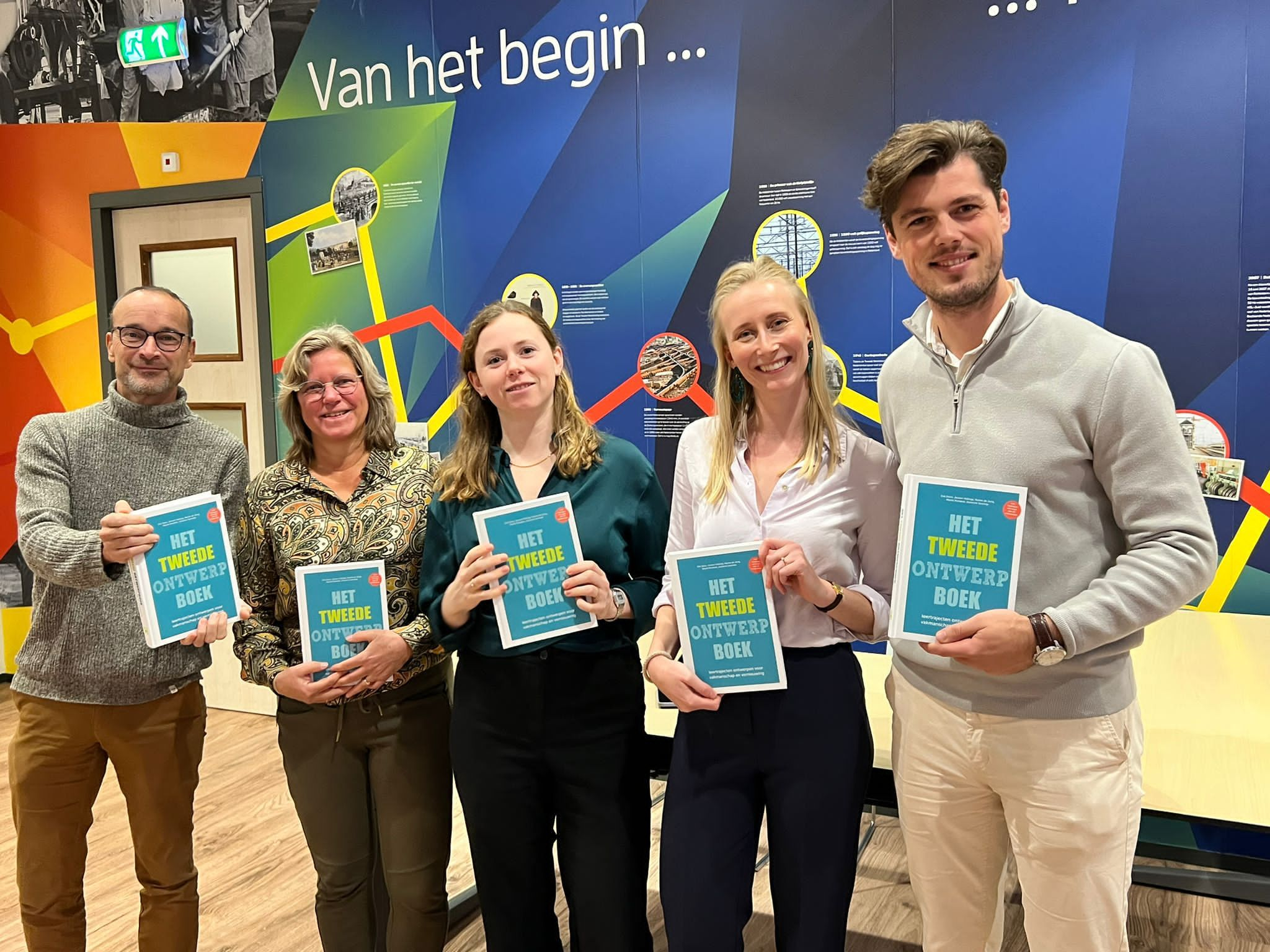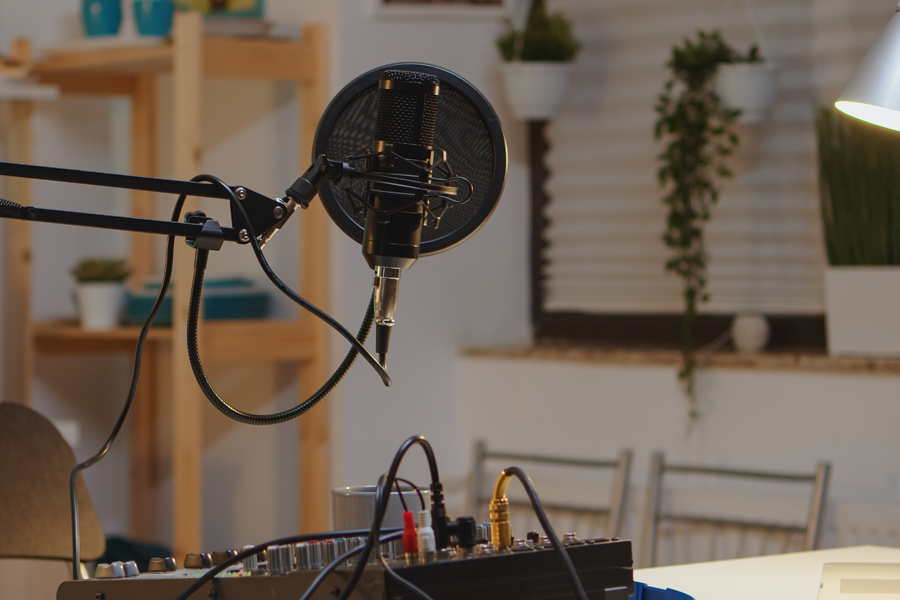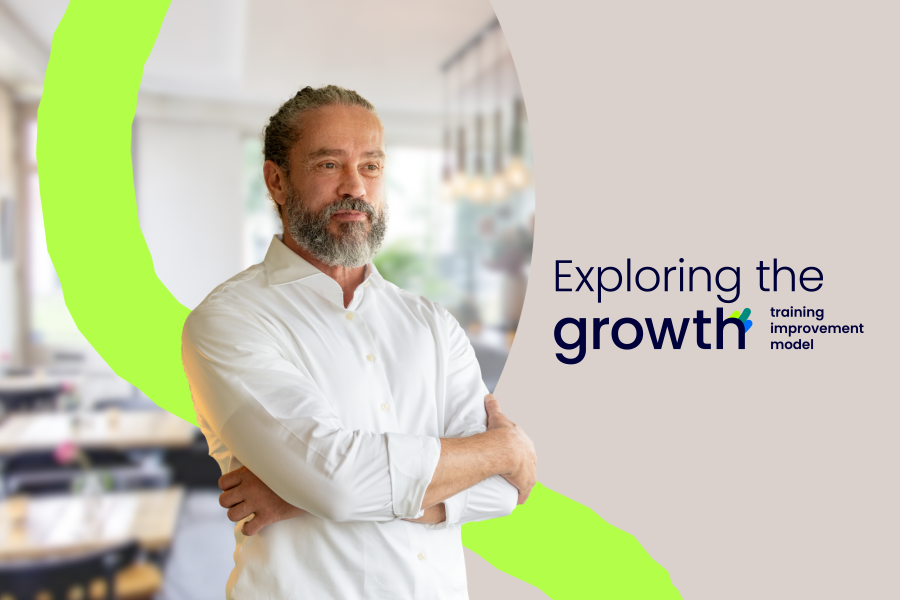Podcast: The evolving designer

In the world of designing learning journeys, a solid foundation has been established over the years; professional designers now know how to collaboratively craft powerful and effective designs. However, there is always room for learning, also for learning designers. Therefore, Kessels & Smit introduced "Het Tweede Ontwerpboek” (The Second Design Book).
"Over the past decade, we have discovered alternative design methods, leveraging new techniques and technologies," explain the authors. With these advancements in mind, it was time for an innovative sequel to the first edition of the book.
"The design process is above all an interesting learning process."
Important note
The book and podcast are both in Dutch so in this article we will give you some tips and highlights in English. But reading the book and listening to the podcast would be a good exercise if you are willing to give learning Dutch a try of course.
The authors
Erik Deen, Jeroen Hellings, Nynke de Jong, Mariël Rondeel and Josianne Savonije are five L&D professionals who share a passion for designing learning and development journeys. Therefore, they joined forces to write the book. From that passion, they support individuals, organisations and communities around the world in designing meaningful learning journeys. They believe that the development of any organisation or group goes hand in hand with personal growth and powerful collaboration.

aNewSpring's Learning Innovator Roy and Training Improvement Engineer Puck joined Jeroen, Nynke, Mariël, and Josianne for a three-part podcast diving deeper into the developments surrounding the design of learning journeys. They discuss flexible and personalised learning, new learning interventions, and their future expectations. The podcast "De Ontwerper in ontwikkeling" (The Evolving Designer) is available on Spotify.
Part 1: Flexibility and personalised learning
In the first part of the podcast, Roy and Puck, along with the guests, delve into the hot topic of "flexibility and personalised learning." According to Jeroen Hellings, these two concepts are inseparable: "Personalised learning is about learning where and when you want and having the choice in how and what. Which steps you want to take in your own development. Flexible learning is more about the offering, so you need to find a solution to ensure that people can learn in that way and have freedom of choice."
Flexible learning also requires trusting each other. Mariël Rondeel says, "If you want to learn, you want to achieve something. If people want to achieve something, for example, in their work, they are willing to do something for it. You can't force people to learn."

Go to Gemba
Go to where the learners work. Go to where it happens and stay close to the target audience. Design together.
"Try to align as much as possible with what people are already enthusiastic about, related to their work of course. Then the chances are much greater that people will start learning from themselves," say the authors.
Part 2: New learning interventions
In the second part of the podcast, Roy and Puck, along with the authors, explore learning interventions. Digitalisation offers many new possibilities in this regard.
They discuss the implementation of podcasts, a learning intervention that exploded during the COVID-19 pandemic, where remote connection became more important than ever before. A podcast is a learning intervention on both sides because not only listening to it is educational, but also the process of making it is a learning process in itself.
And the fun part? Anyone can do it. "You just have to do it and experience it," says Josianne. It's logical that people initially see obstacles, like making an investment beforehand. It's important to look at those obstacles together and to find a way to overcome them.
Design pressure cooker
Another learning intervention we see that is becoming more popular is the design pressure cooker. During a session, participants are challenged to work together on a solution to a problem. They have a short time for this, so the pressure is high, and they need to work intensively.
By setting a clock, a certain pressure arises that requires the team to get to the core quickly. This requires a lot of creativity.

Think outside the box
With podcasts and design pressure cookers, you can see that the learning interventions stimulate people in new ways to learn and to be engaged and stay engaged.
With the podcast, this is mainly because people can share their story and listeners can ask questions or reflect whenever they want. This learning intervention ensures that people share more and deal with learning in a new way that doesn't necessarily feel like learning.
In a design pressure cooker, creativity and involvement are stimulated by inviting different perspectives. This allows you to create support for the change earlier and learning starts already during the design process.

More about the design pressure cooker
Kessels & Smit previously made a podcast about this learning intervention.
Therefore, think beyond standard learning interventions, think about the most important obstacles and how to overcome them. It's important to just try it so you can see what beautiful, perhaps unexpected, things it brings.
Part 3: The designer of the future
In the final part of this series, Mariël and Jeroen discuss the future of the designer with Roy and Puck. Of course, we don't have a crystal ball and therefore cannot precisely say what the world will look like in five to ten years, but the experts can tell us about where they see themselves in the future and what they expect. Flexibility and continuous development are central.
"There are and will be increasingly new ways to shape learning. There are more and more possibilities, but it remains important to look at what the question actually is, how we can extract the essence from it, and what fits best," says Mariël.
Doing research
The first phase of designing consists of researching. It is important to engage in conversations with people. Mariël thinks this will still be the case in ten years, but she also keeps her eyes open for new developments. "Maybe it will be different in ten years. That's why it's also fun to work with new colleagues and look at their ways of doing things."
What the future of the designer will look like depends on what people want to see in a learning journey and what they ask of a designer.
Mariël emphasises the importance of curiosity and experimentation, while Jeroen points to the growing need for advisory skills and the ability to make designs work in an organisational context.
Holistic approach
In the field of organisational development, learning plays a crucial role. This is not just about offering training and courses, but also how a learning design lands in the organisation. An organisational culture can encourage but also hinder learning. As a designer, you can try to work with that. One way to do that is by including organisational culture, learning goals and learning needs in your design. ‘There is a lot of power in embracing a holistic approach in the design process,’ says Jeroen.

Keep asking questions
It is important to constantly ask yourself questions:
Who am I actually doing this for and what does it all mean?
Where am I?
How do things work here?
Who is it really about?
You must analyse well, but also increasingly advise. Work with people and do things together rather than doing them for them. The essence of the profession lies in investigating what is really going on and then finding a solution and figuring out what is needed. The means are just means.
As long as you keep doing that, can be critical of yourself, and keep being inspired by others, you will, according to the authors, always be a good and future-proof L&D professional.
So to sum up, keep developing yourself as a designer. Keep challenging yourself and keep asking questions. Work together, but above all, learn together. "The design process is above all an interesting learning process."


